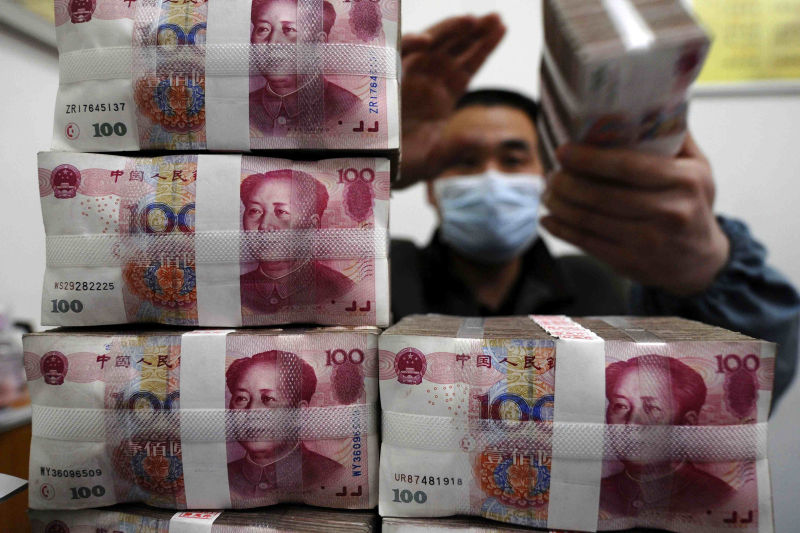China is not expected to wade in to halt the yuan’s predicted slide against the surging dollar over the coming months, forex analysts said.
The yuan currently sits at 7.12 to the dollar but European Financial Services Group SEB expect it to tumble to 7.40 by October and November while Citi Bank expect it could slide to 7.30.
“The central bank needs to play a balance between being market-oriented and also ensuring financial stability,” said Ju Wang, head of Greater China FX and rates strategy at BNP Paribas.
The currency conundrum comes at a pivotal moment for China, as its economy struggles with lower forecasted growth than its Asia neighbours for the first time since 1990.
China’s Balancing Act
A weaker yuan brings some benefits – exports to the US are bolstered due to being cheaper in dollar terms, which comes at a vital time when internal demand is waning from Covid restrictions and the country’s ongoing property crisis.
On the other hand, it becomes harder to ease monetary policy to support the country’s faltering economy. It also risks stoking financial instability fuelled by capital outflows. Foreign investors cut holdings of Chinese bonds for the seventh straight month in August.
And the yield gap between China’s benchmark 10-year government bonds and the US Treasury’s is hovering at the widest in 15 years.
Small Measures
Chinese authorities have emphasised that they want to make the yuan more international and market-driven.
They are not aiming to control the long-term value of the yuan, but to prevent a sudden short-term depreciation that would disrupt its economy and capital flows, analysts said.
China’s techniques so far have been tried and tested tweaks, such as telling state-owned banks to sell off dollars, which clawed back the yuan from a 14-year low of 7.25 to the dollar last week.
The measures, so far, have protected the yuan from the fate of other Asian currencies which have nosedived under pressure from rising US interest rates. Japan’s yen fell to a 24-year low last month, whilst India’s rupee hit an all-time low last week.
The yuan has been comparatively resilient against a basket of currencies of China’s main trading partners, with a fall of only 1.4% year-to-date.
High Stakes
For Chinese authorities, who were particularly keen to stabilise the yuan rate before a week-long national holiday in China this week, the stakes are high.
China’s upcoming twice-a-decade Community Party conference, which starts on October 16, comes at a time of major economic change. The country’s veteran economic head, Lui He, is due to step down after decades in charge.
“As China goes on a week-long holiday, the threat of intervention in the offshore yuan could keep a lid on near-term depreciation,” said Khoon Goh, head of Asia research at ANZ.
“While the authorities will want to maintain FX stability into the Party Congress, the widening yield differential between the US and China could still see yuan weakness re-emerge later in the year.”
- Reuters, with additional editing from Alfie Habershon
Read more:
China’s Factory Activity Edges up But Service Sector Slows
China’s PBOC Backs Mortgage Rate Cuts to Lift Property Sector
China Plans $347bn in Treasury Bonds, Plus Infra Loans






















